On May 23, 2021, the School of Mongolian Studies of IMU held the symposium on the research proposal of the key project funded by National Social Science Foundation-the Research on the History and Geography of Mongolia Plateau during Northern Yuan Dynasty.
Present at the symposium are more than 50 experts, scholars and students from Zhejiang University, Inner Mongolia University, Inner Mongolia Normal University, Hohhot Minzu College and Hohhhot Vocational College. They include Professor Liu Yingsheng, PhD candidate supervisor with the Academy of Chinese and Western Studies of Zhejiang University, Professor Buyandelger, deputy dean of the School of Mongolian Studies of IMU and PhD candidate supervisor of the Department of Mongolian History of IMU, Professor Cao Yongnian, Professor Hurcha and Professor Ulantuya who are with Inner Mongolia Normal University and Professor Zhao Yibing with Hohhot Vocational College. Professor Erhimbayar, vice president of IMU attended the symposium and delivered a speech during the symposium. Professor Buyandelger, deputy dean of the School of Mongolian Studies and PhD candidate supervisor of the Department of Mongolian History, presided over the meeting.
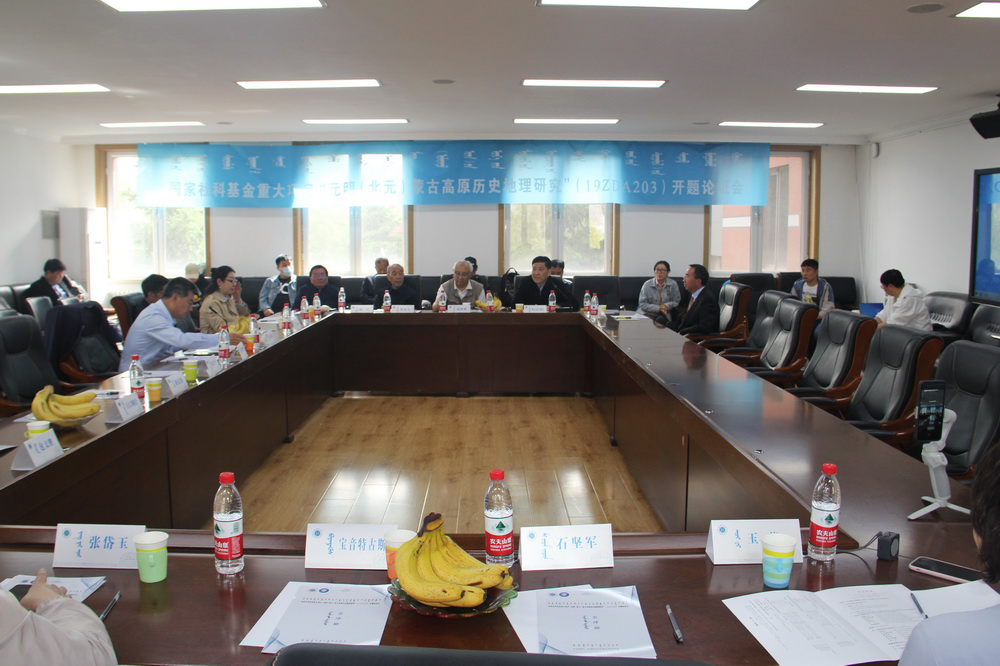
Symposium venue
Professor Erhimbayar, vice president of IMU, addressed at the symposium on behalf of IMU. He said that the university will strongly support and encourage the chief expert of this key research project to establish scientific research platforms and tackle key problems together with other researchers and that the smooth progress of the project is vital for the development and improvement of the discipline of Chinese history and the discipline of humanities and social sciences. Erhimbayar stressed that in the research attention should be paid to the ideological problems and strengthening the sense of the community of Chinese nation should run throughout the whole process of the project research.
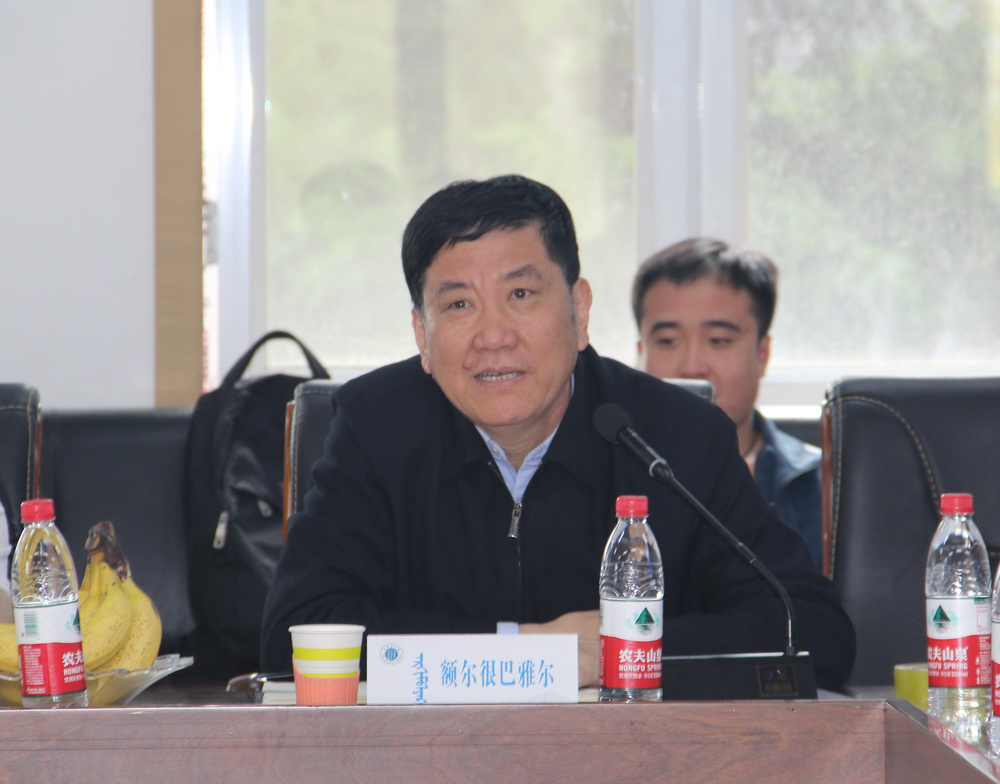
Erhimbayar, vice president of IMU, addresses at the symposium.
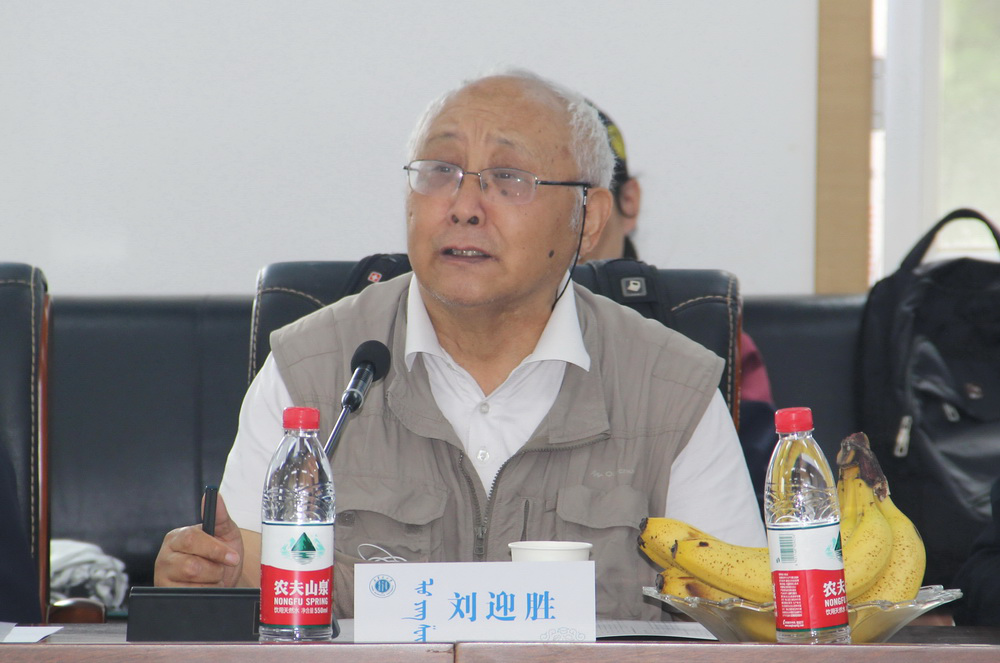
Professor Liu Yingsheng with the Academy of Chinese and Western Studies of Zhejiang University, leader of the project review group, speaks at the symposium.
Professor Shidurgu, chief expert of the project, gave a detailed introduction to the project in the following respects---its major research contents, research path and methods, goal of the research and division of the sub-projects. He said that the history and geography of Inner Mongolia are one important issue in the research of the history and geography of frontier areas and minority ethnic groups in China. The study of history and geography of Mongolia Plateau is one of the important parts of the research on Mongolian history and history of ethnic groups in Northern China. And the study of history and geography of Mongolia Plateau during Northern Yuan Dynasty is the core of the whole study of history and geography of Mongolia Plateau. He pointed out that the research mainly concerns the history and geography of Mongolia Plateau from 1206 to 1644 during Yuan Dynasty and Northern Yuan Dynasty, involving the major Mongolian tribes and the distribution of their grazing land during Jin Dynasty and Yuan Dynasty; conquest of Mongolia Plateau and establishment of administration departments there by Mongolians; border-area garrisoning , garrison troop’s farming and courier stations south and north of Damo Desert(comprehending present Inner Mongolia, Xinjiang, Mongolia and some parts of Russia); grazing land, central tents and towns of Mongolian lords, royal relatives and meritorious men; important routes and major battlefields along which and where troops of Ming Dynasty launched attacks against Mongolians; formation of border between Ming Dynasty and Northern Yuan Dynasty and changes that happened to the frontier passes where trade between two sides and rewarding to Mongolians by Ming Dynasty took place ; the defence system of Wei and Suo(a two-level military organization mechanism) and nine military commands; disputes and changes of grazing land between Eastern Mongolia and Western Mongolia and those in each of them in the early period of the Northern Yuan Dynasty; gradual stabilization of grazing land of Wanhus(wanhu is a high-ranking official title ) and Otog Group during the middle and late period of Northern Yuan Dynasty after Dayan Khan’s enfeoffment of his descendants and key changes to the land in the late period of Northern Yuan Dynasty; relics of Bansheng(present Hohhot area, capital of Khans and nobles of Northern Yuan Dynasty) and population of Northern Yuan Dynasty. Since Yuan Dynasty, the social history, cultural inheritance and history of minorities on Mongolia Plateau have been complete and consistent.
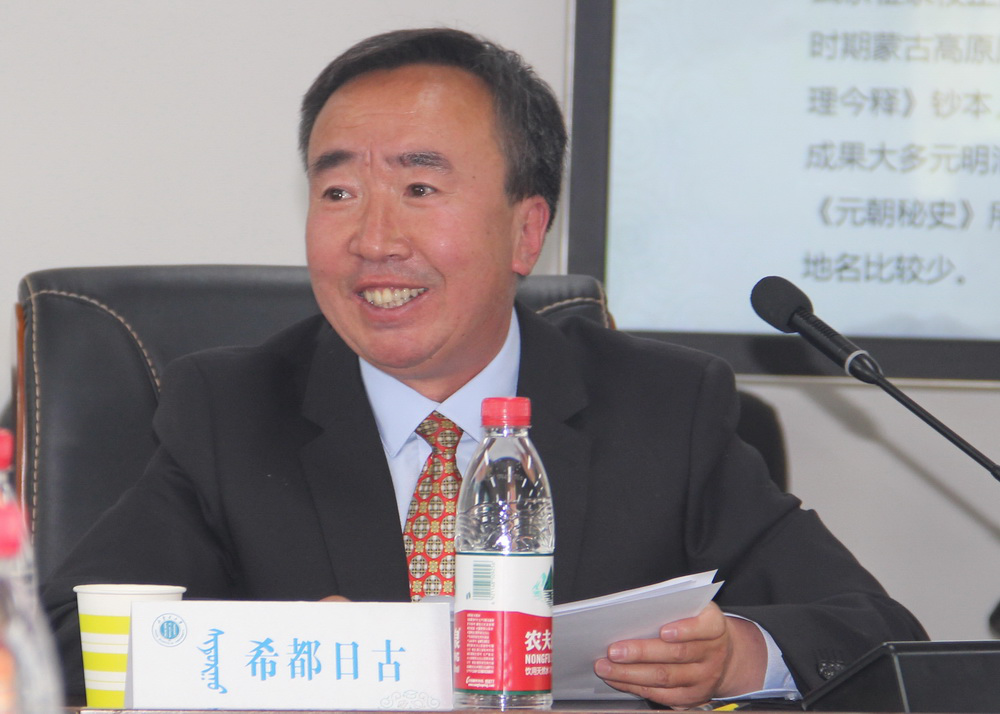
Professor Shidurgu, chief expert of the project, introduces the project.
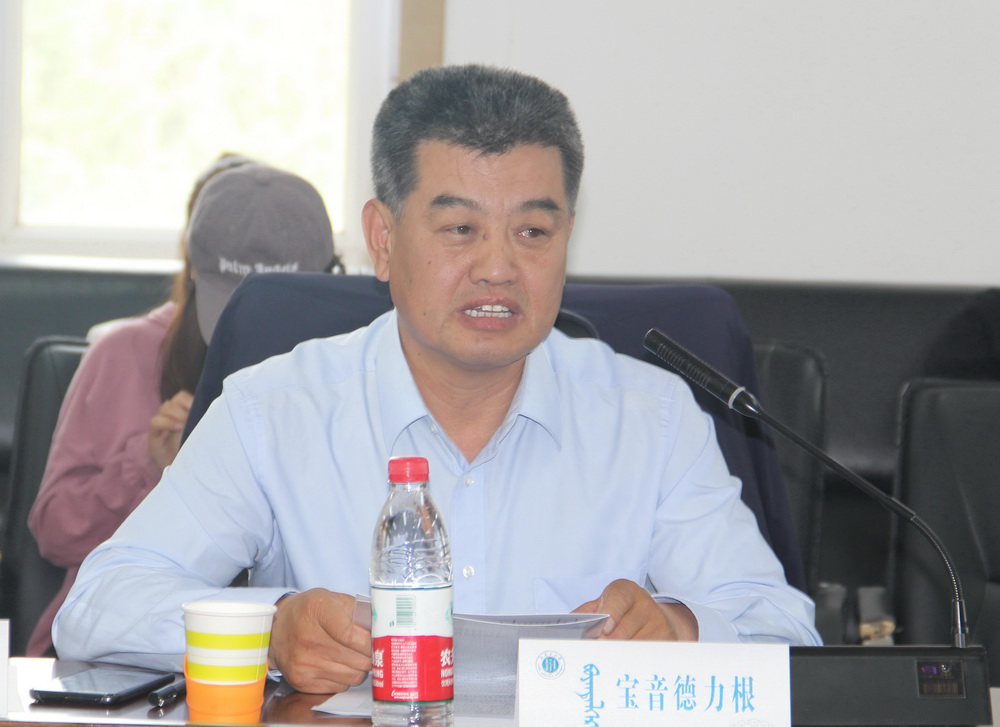
Professor Buyandelger with the Department of Mongolian History of IMU speaks at the symposium.
Those who are in charge of sub-projects, introduced their own sub-projects at the symposium in the aspects of key research contents, research path and members of their sub-projects. They include Zhang Daiyu, associate professor of the Department of Mongolian History, Akasaka Tsuneaki, research fellow who comes to the Department of Mongolian History under the talent attraction plan-“Steed Plan”, Buyantoges and Yuzhi, another two associate professors of the Department of Mongolian History and Associate Professor Shi Jianjun who is with Shaanxi Normal University.
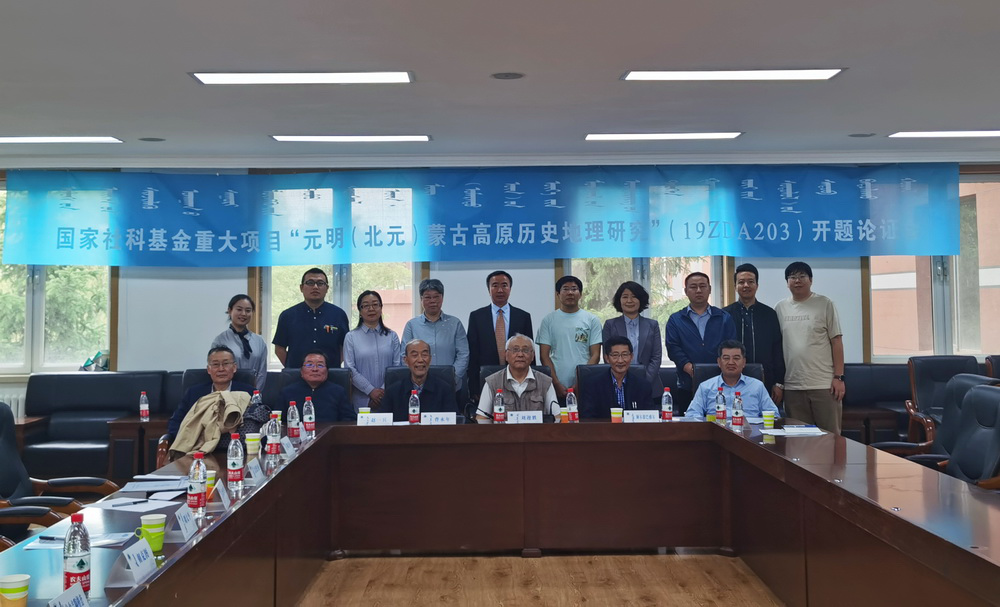
Symposium venue
The scholars present at the symposium unanimously agreed that the key project funded by National Social Science Foundation-the Research on the History and Geography of Mongolia Plateau during Northern Yuan Dynasty is of great significance. They thought that the research on the history and geography of Mongolia Plateau during Northern Yuan Dynasty is very important in broadening the research of Chinese history and Mongolian history, salvaging the cultural legacy of minorities on Mongolia Plateau and serving the politics and diplomacy of China. In their opinion, the academic value unique to this research lies in the fact that it can tackle some difficult and important problems in the study of Mongolian history, history of Yuan Dynasty and Euro-Asian history by exploring the archives in Manchu language and Mongolian language during the late period of Ming Dynasty and early period of Qing Dynasty and make full use of the archaeological findings on Mongolia Plateau achieved by some scholars at home and abroad. They pointed out that the research aims to make breakthroughs in the study of history and geography of Mongolia Plateau during Yuan Dynasty and Ming Dynasty to make vital academic achievements, broaden the research field of Mongolian studies and Chinese history studies, fill in a way the gap in the study of history and geography of Mongolia Plateau in the academic world and push ahead with the further study of history of Mongols and history of Yuan Dynasty. In terms of its application, the achievements in the Mongolian studies and the research of historical geography can be transformed into applied technologies with the help of the geographical information system of Mongolia Plateau to serve the development of the present social economy. In social terms, the research helps to carry out the spirit of the instructions of Xi Jinping, general secretary of CPC Central Committee, which he gave during his inspection of IMU, and pass down and discover the cultural legacy of the minorities. The research of the history and geography of Mongolia Plateau is also historically important in salvaging the cultures of the ethnic groups on Mongolia Plateau. The study can provide historical references and lessons for the decision-making concerning the construction of politics, economy, culture and relations among ethnic groups in present Inner Mongolia and for the country’s ethnic policies, regional economic policies and diplomatic exchanges with neighboring countries. The approval of the research will play an important role in the discipline construction and high-level talent cultivation at IMU and is bound to further improve the teaching and scientific research in some disciplines concerned at IMU.
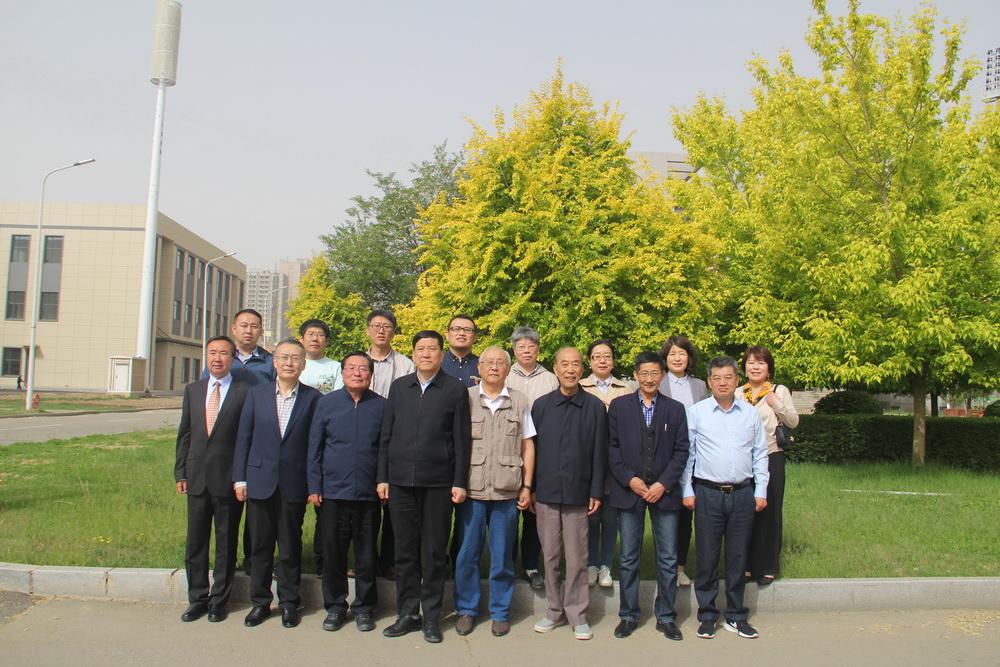
Group picturing

